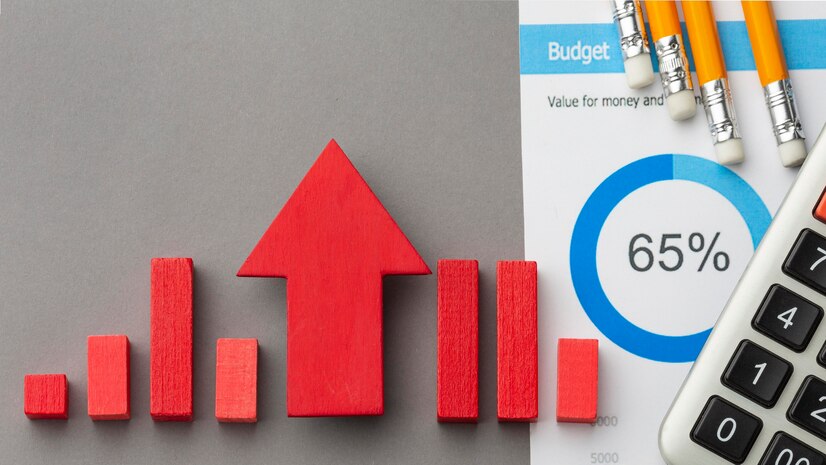Your website's bounce rate is a metric that indicates the percentage of people who land on one of your website pages and then leave without clicking anywhere else on your site – in other words, single-page visitors.
If visitors bounce, it indicates that they either didn't find what they were looking for or the page isn't user-friendly. A high bounce rate also means that visitors aren't seeking more content on your site, not clicking on your call to actions, or converting into leads.
For marketers whose primary goal is to attract and convert website visitors into highly qualified leads for their sales teams, this can be a daunting prospect. So, let's delve into how to reduce your bounce rate.
|
|
How to Reduce Your Website's Bounce Rate
Set Realistic Expectations When it comes to bounce rate, setting the right expectations is crucial. Look at your past data as a basis for your website's performance. Then, compare it to the average in your industry and on your website.
For example, suppose your B2B brand has an average bounce rate of 56%. If the industry average bounce rate is 47%, you might say that your rate is indeed high.
Attract Relevant Visitors Imagine yourself in a grocery store. You're looking for a specific item and walk down an aisle. You search around and can't find it. What do you do? You either ask for help or move on to the next aisle.
Think of your website as an aisle in a store. If your content doesn't match the visitors you're attracting, they'll quickly leave.
So, how do you ensure you're attracting the right visitors?
Create several landing pages with unique content and keywords for different buyer personas. Write engaging and informative meta descriptions for search engine users. Improve online advertising campaign targeting.
Prioritize User Experience Today, nobody has the patience to navigate a challenging website. You only have a few seconds to make a good impression and offer a website where users enjoy being.
To achieve that, follow these steps:
Make your text readable by organizing it logically and using larger fonts, lists, white space, good color contrast, and readable headlines. Use well-structured and responsive layouts that provide quick and easy access across all platforms and browsers. Don't let ads distract from your content. Place static ads alongside and load multimedia ads separately.
Increase Page Load Time Page speed is one of the main reasons visitors leave a website. In fact, Google reported in 2017 that when page load time reaches 10 seconds, mobile bounce rates increase by 123%.
Think about the last time you waited for more than a minute for a page to load. When it happens, most users instinctively exit and find another website to fulfill their needs.

Multiple factors can contribute to slow website speed:
Image size Simultaneously loading multimedia content Server performance
The ideal page load time is two seconds or less. Make sure to regularly test your page speed to ensure it falls within this timeframe.
Produce Quality Content Content can make or break the user experience on your website.
Your content should be:
Engaging – Does it make visitors want to keep reading? Clear – Is understanding and digesting your content easy? Relevant – Does it answer the questions your website visitors have?
If you're not sure how to answer these questions, have a third-party objectively review your content. Additionally, consider hiring a skilled copywriter experienced in producing high-quality content.
Monitoring, Testing, and Optimization
-
Monitor Changes: Keep a close eye on any changes made to your website to assess their impact on your bounce rate.
-
A/B Testing: Consider running A/B tests to identify which elements on your web pages might be affecting your traffic.
-
Optimization: Once issues are identified, optimize your website for better performance.
-
Checklist for Optimization: Use a checklist to guide your optimization efforts and maximize your website's performance.
These strategies can help you reduce bounce rates across various channels, improving user engagement and conversion rates.
Reducing the Bounce Rate of Your Email
-
Email Bounce Types: Understand the two types of email bounces—hard and soft—and their implications.
-
Double Opt-In: Use double opt-in to verify email addresses, sending a confirmation email with a subscription CTA.
-
Clean Subscriber List: Regularly clean your subscriber list by removing inactive or invalid email addresses.
-
Reputable Email Service Provider: Use a trusted email service provider for sending out your email campaigns.
Reducing the Bounce Rate of Your Blog
-
Clear Page Structure: Use clear and hierarchical page structures with headings and subheadings to organize content.
-
High-Quality Media: Incorporate high-quality images, GIFs, videos, and pictures to enhance engagement.
-
Error-Free Content: Ensure content is free from errors and mistakes that can deter readers.
-
Clear CTA: Include a clear call to action (CTA) to guide visitors to the desired next steps.
Reducing the Bounce Rate of an E-commerce Website
-
Align Search Campaign: Ensure your search campaign aligns with your landing page, matching targeted keywords with page content.
-
Optimize Landing Page: Optimize landing pages for conversions using best practices, such as clear calls to action (CTAs).
-
Build Credibility: Add social proof through customer reviews and trust badges to establish credibility.
-
Live Chat Feature: Consider adding a live chat feature to assist visitors and gain insights for optimization.
Designing a Website with a Low Bounce Rate
Having a website with a low bounce rate requires continuous monitoring and maintenance.
By ensuring your content aligns with visitor needs, your content is easily navigable, and your conversion elements are clear, you can achieve a low bounce rate.
Are you ready to start optimizing your website? Use this checklist as your guide. It includes everything you need to improve your website's performance, including SEO and security.


